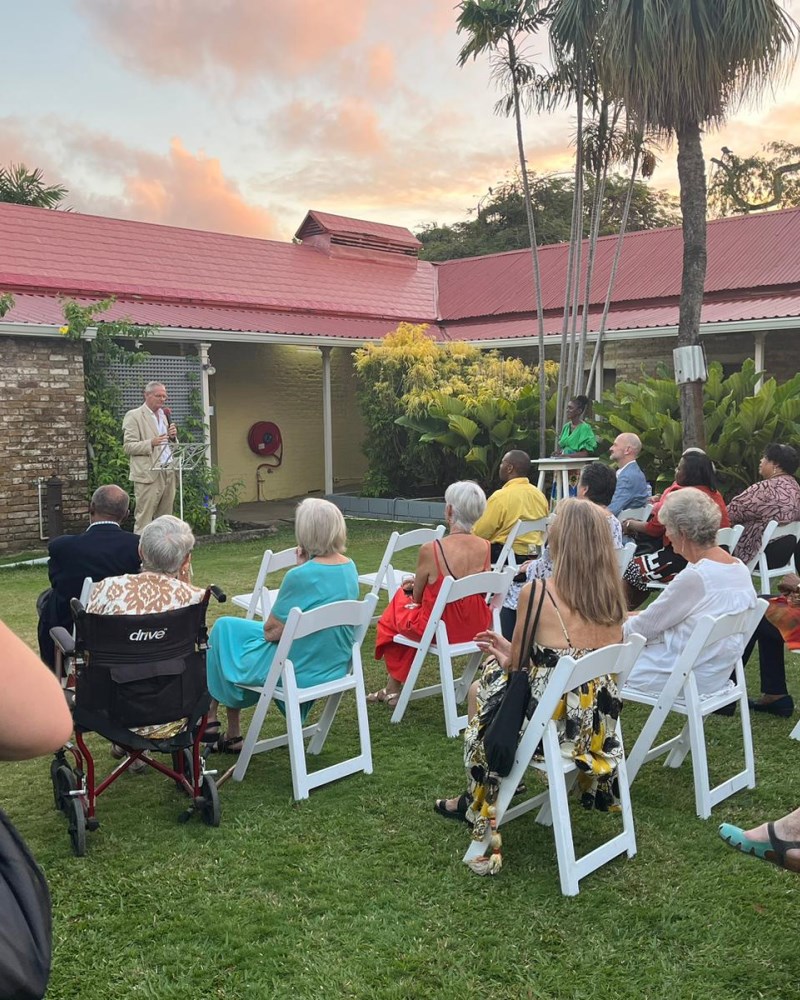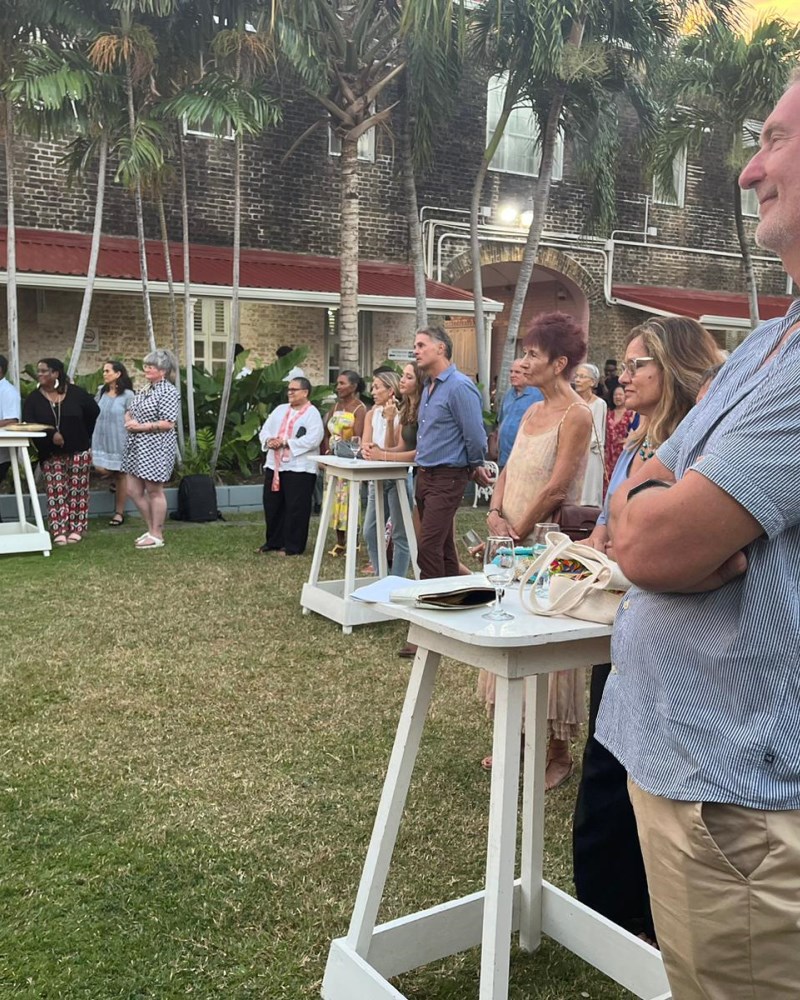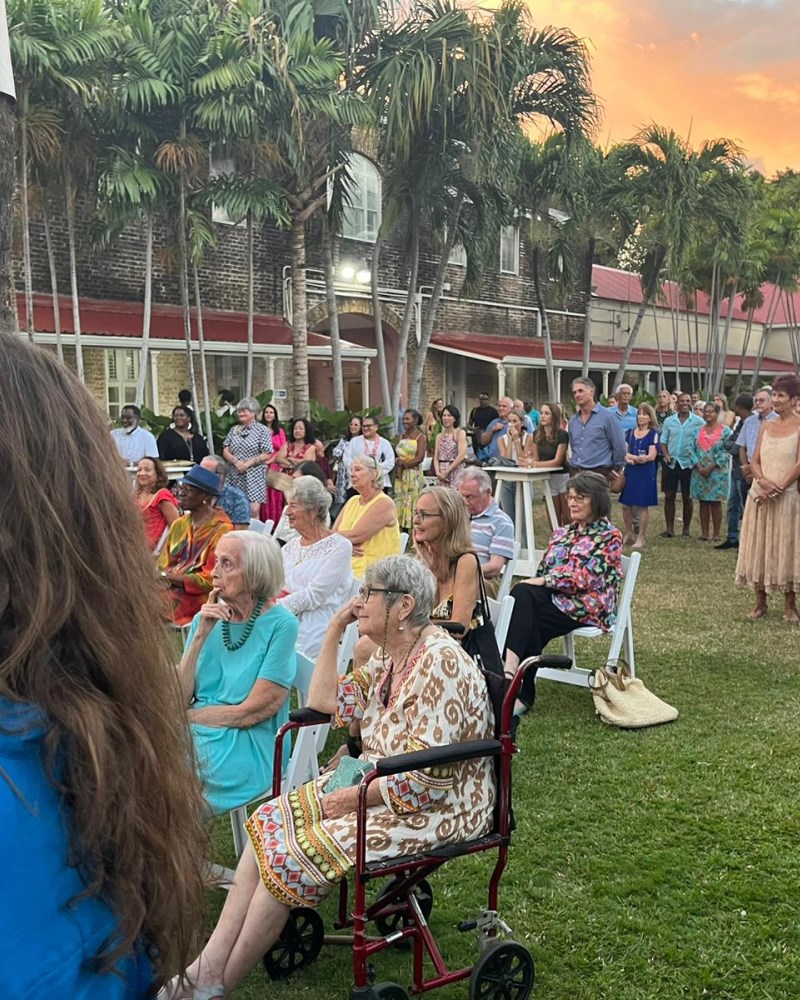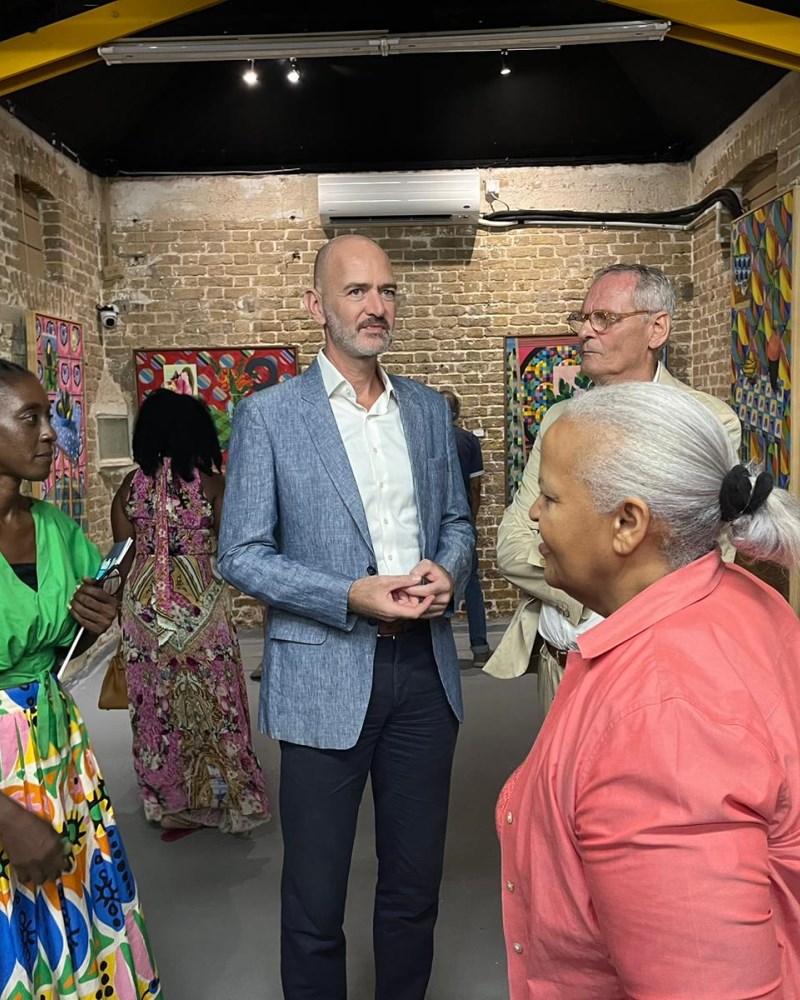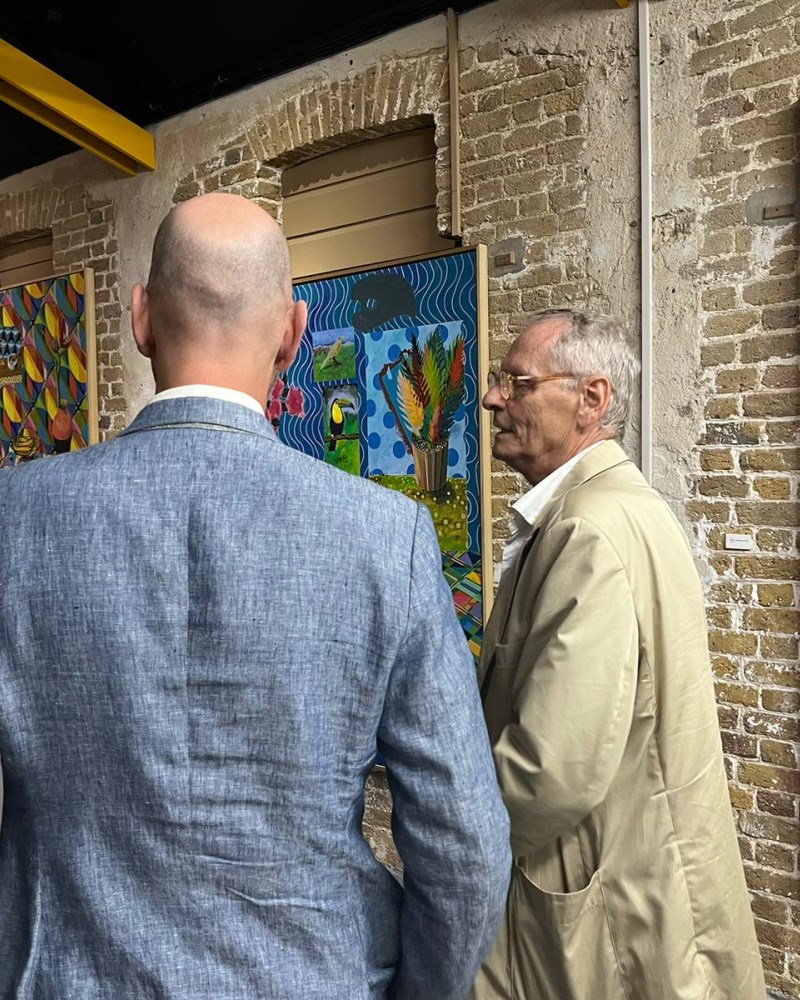The Barbados Museum is delighted to announce the forthcoming exhibition “Wuh Part You Is?”, paintings by Dennis de Caires. This vibrant collection radiates a celebratory spirit, embodying a positive perspective on the world. Marked by a high-key palette, intricate patterns, and open imagery, these artworks unmistakably draw inspiration from their Caribbean roots. With over twenty oil paintings, this exhibition represents the artist's most ambitious showcase to date, spotlighting recently completed works, including some initiated in 2004 during the artist's residency in St. George.
When: The exhibition is open to the public from 23rd February – 24th March 2024.
Where: The Barbados Museum & Historical Society, Dalkeith Road, Bridgetown, Saint Michael, Barbados.
Opening hours: Monday – Saturday 9:00 am – 5:00 pm. Sundays and Bank Holidays Closed
About the artist: Dennis de Caires, a native of Georgetown, Guyana, is an accomplished artist with a formal education in Fine Art from Winchester School of Art, The Royal College of Art, and Cité Internationale Des Arts in Paris. While he spent several years living and working in Europe, his profound connection with Barbados dates back to 1981, marked by numerous solo exhibitions held on the island at prominent venues like Queen’s Park Gallery, The Art Foundry, Zemicon, and The Brighton Storeroom. Serving as the head of the Fine Art Studio Programme at Barbados Community College from 2003-5, de Caires currently resides and works in St. Michael, Barbados.
Catalogue: Accompanying the exhibition is a comprehensive sixty-four-page catalogue featuring an insightful analytical essay titled "The Mystery of Things" by Therese Hadchity. Additionally, the catalogue includes a compelling interview with Dennis de Caires conducted by the accomplished ceramicist and artist, Juliana Inniss. Hadchity's essay delves into the artist's approach to painting and the contextualization of his imagery within the Caribbean milieu. Inniss' interview explores specific facets of the artist's influences, background, and artistic practice, providing a nuanced understanding of his creative journey.
The exhibition is suitable for a general audience and visitors will be aided by individual notes – written by the artist – for each of the paintings.
Excerpts from The Mystery of Things by Therese Hadcity:
“For all their visual intensity, these paintings are compellingly elusive. This is slow art. But now I believe that elusiveness itself – the mystery of things – in no small way is what they are about.”
“Though incontrovertibly belonging to the still-life tradition - a presentation of objects also known as ‘nature morte’ - one will be hard-pressed to connect the joyousness of de Caires’ works with that genre’s obligatory hints at the inevitable decay of all living things. There is virtually nothing ‘still’ or ‘dead’ in these paintings, where colours and patterns buzz and tingle the moment your gaze falls upon them.”
“Despite the absence of human figures and stories, the ethos of these works is thus a profoundly humanist one, and one which resonates with the spirit of the modernism they so often and longingly invoke.”
“Unlike European modernists’ preoccupation with form and the character of art itself, the Caribbean version never became a purely formalist and self-sufficient exercise - it was, by contrast, deeply invested in the creation of a new and forward-looking cultural identity. Rather than lamenting the inevitable belatedness of Caribbean modernism, de Caires’ – in this regard aligning himself with Derek Walcott - celebrates the possibilities of its ‘responsive’ character and reminds us, in the exhibition’s very title, of modernism’s always contextual configuration.”
“It seems to me hugely significant that everything in these compositions seems equally important: the moment our gaze falls on flowers or fruits, it is interrupted by another object, pattern, or compositional oddity beckoning for attention; nothing really recedes, even the background thrusts itself into the foreground. But what seems like a lack of restraint is precisely the opposite: as a compelling form of realism, the artist leaves us to establish our own hierarchies of meaning.”
Excerpts from an interview with Juliana Inniss, responses by Dennis de Caires:
“Pattern also serves to establish sound in my work and I want to make the viewer hear something when looking. I also want to embellish the sound by establishing rhythms within the painting that appear natural and give the viewer a direct connection to our shared physical world.”
“My return to the Caribbean on a full-time basis has given me a more direct connection to the natural world (I lived in London for many years) and I know this has had an influence on recent work…….”
“But it’s not simply a question of form and content; the sound of Caribbean music is important to me - its timbre and colour. It’s notable that the Steel Pan must be heard live (comparable in recording as paintings are to their reproduction) where the physical impact of hearing a steel band on the sternum is an essential aspect of “apprehending” that sound. I would love my paintings to have a similarly physical effect on the viewer.”
“I usually have some vague idea of the image for the painting and use a range of references for the “objects” that might appear: frequently from other art but also from photographs, advertisements or drawn from observation if I can’t find an existing image to rework. I can also be tempted by a written description – Edgar Mittelholzer’s A Morning At The Office is a brilliantly visual work – or sometimes a direct visual experience from the physical world like a moon at night.”



